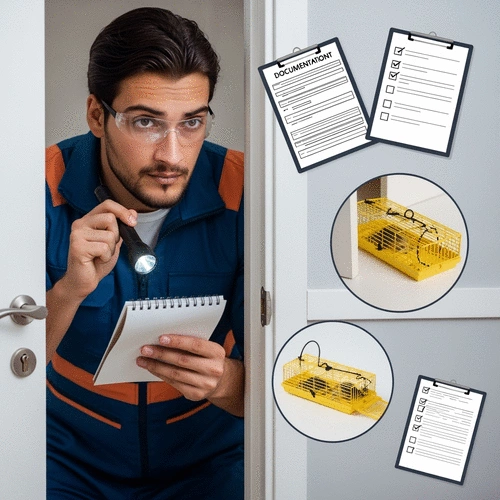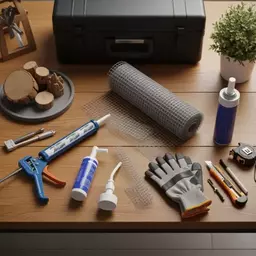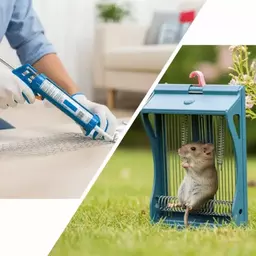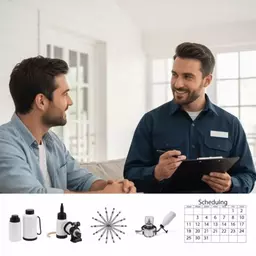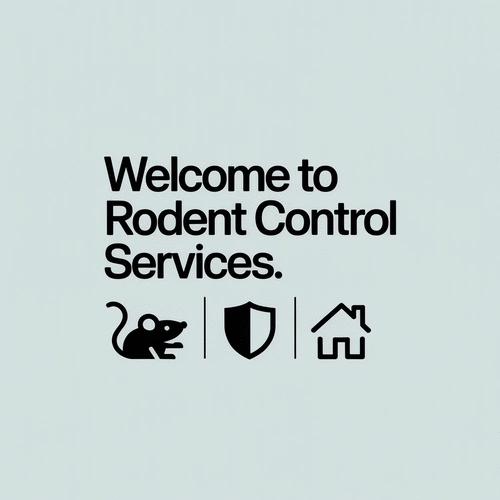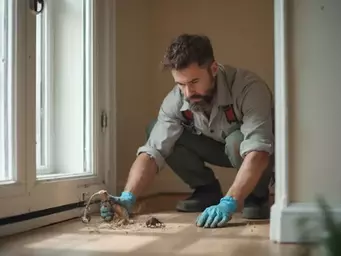What if a simple checklist could save you from a costly rodent infestation? Regular inspections can empower you to maintain a rodent-free environment, and this guide will show you how!
What You Will Learn
- The critical role of regular inspections in preventing rodent infestations.
- How to identify common signs of rodent activity effectively.
- Key rodent behaviors that can help you anticipate and manage infestations.
- Essential inspection techniques to monitor and control rodent populations.
- Proactive strategies to seal entry points and document findings for ongoing management.
Key Aspects of DIY Rodent Inspection and Control
This visual summarizes the crucial stages and components for effective self-managed rodent control, from initial inspection to ongoing prevention.
Understanding the Importance of a DIY Rodent Inspection Checklist
When it comes to keeping our homes and offices free from rodents, having a solid DIY rodent inspection checklist is essential! By regularly inspecting your space, you can catch potential problems before they escalate into full-blown infestations. But why is this so crucial? Let’s dive into that!
Why Regular Inspections Matter for Effective Control
Regular inspections are the backbone of effective rodent control. They help you identify any issues early on, making it easier to manage them before they become a major headache. Think of it as a routine health check-up for your home—better to catch things early! Here are a few reasons why you should prioritize inspections:
- Early detection of rodent activity
- Prevention of property damage
- Reduction in health risks associated with infestations
By keeping tabs on your environment, you can maintain a rodent-free space. The New York City Department of Health provides a comprehensive rodent inspection checklist to help you identify and address potential issues. In my years of experience at Rodent Control Services, I've seen countless cases where a simple inspection could have changed the outcome dramatically!
Identifying the Signs of Rodent Infestation
Knowing what to look for during your inspections is vital. Rodents can be sneaky, so familiarizing yourself with the common signs of infestation can save you a lot of trouble. The EPA offers excellent guidance on how to identify and prevent rodent infestations, which includes recognizing key indicators. Here are some key indicators to keep an eye out for:
- Droppings around food packages or in drawers
- Gnaw marks on furniture, walls, or baseboards
- Strange noises coming from walls, especially at night
These signs can indicate that you have an unwelcome guest! If you notice any of these symptoms, it’s time to take action.
Understanding Rodent Behavior: Key Indicators of Infestation
Understanding rodent behavior is just as important as spotting the signs of an infestation. Rodents tend to be creatures of habit, often following the same paths to find food and shelter. The Los Angeles County Department of Public Health provides a practical guide to rodent control that delves into understanding these behaviors. Here are some behaviors to watch for:
- Frequent sightings of rodents, especially during dusk and dawn
- Tracks in dusty areas or along baseboards
- Chewed packaging or uneaten food left scattered around
By recognizing these behaviors, you can create a more effective strategy for pest management. Remember, the sooner you understand and act on these indicators, the better protected your space will be.
Essential Inspection Techniques for Rodent Activity
I couldn't find a specific video titled "DIY Rodent Inspection Checklist: When to Inspect and How to Document Findings for Effective Control." However, a video that provides relevant information on inspecting for rodents is "Identify & Eliminate Rodent Entry Points in Your Home" by Smith's Pest Management. Here is the embed code for this video:
Pro Tip
Did you know? Regularly documenting your findings during inspections can significantly enhance your rodent control strategy. By keeping track of rodent activity, entry points, and signs of infestation, you can identify patterns over time and adapt your approach accordingly. This proactive measure not only saves you time and money but also helps you stay one step ahead in maintaining a rodent-free environment!
Frequently Asked Questions About Rodent Inspections
Summary of Effective DIY Rodent Inspection and Control
As we wrap up our discussion on effective DIY rodent inspection and control, it’s important to remember the key components that contribute to keeping your home or business rodent-free. Regular inspections, understanding rodent behavior, and employing effective control measures are all vital parts of this process. With the right tools and techniques, you can take proactive steps to prevent infestations before they start!
Here are some key takeaways to keep in mind:
- Regular inspections help you catch problems early.
- Identifying signs of infestation can save you time and money.
- Using traps and bait stations effectively can significantly reduce rodent populations.
- Always seal entry points to deter future infestations.
- Documenting your findings will aid in ongoing pest management.
By implementing these strategies, you arm yourself with the knowledge and tools necessary for effective rodent management. Remember, a proactive approach is the best defense against these pesky invaders!
Taking the Next Steps: Empowering Yourself Against Rodent Infestations
Why You Should Start Your DIY Inspection Today
So, why wait? Starting your DIY inspection today can be the first step toward a rodent-free environment! Assessing your property regularly allows you to identify potential weaknesses that could lead to infestations. Plus, who doesn't love the feeling of taking control? You can make a real difference in your living or working space.
Here are some reasons to kick off your inspection right away:
- Early detection means less damage and expense.
- It empowers you with hands-on experience in pest management.
- Ongoing inspections help you maintain a safe and healthy environment.
Starting today will pave the way for a proactive approach to pest management. Trust me—your home will thank you!
Resources and Tools for Ongoing Rodent Prevention
To keep your rodent control efforts effective and sustainable, it's essential to utilize the right resources and tools. Here are some recommended resources to help you stay one step ahead:
- Rodent Control Services Website: A treasure trove of educational content, treatment guides, and booking tools.
- Inspection Tools: Invest in basic tools like flashlights, gloves, and inspection mirrors to enhance your inspection capabilities.
- Pest Management Apps: Utilize apps that help you track rodent activity and manage your pest control schedule.
- Community Workshops: Look for local workshops or webinars that focus on pest management techniques.
These resources will not only help you stay informed but also empower you to take charge of your pest control efforts. Let’s work together to create safe and welcoming environments, free from rodents!
Recap of Key Points
Here is a quick recap of the important points discussed in the article:
- Regular inspections are crucial for early detection of rodent activity.
- Identifying signs of infestation can prevent property damage and health risks.
- Understanding rodent behavior enhances your pest management strategies.
- Using traps and bait stations effectively can significantly reduce rodent populations.
- Sealing entry points is essential to deter future infestations.
- Documenting findings aids in ongoing pest management efforts.

